 |
|
|
 |
MONOCOQUE BODY
|
|
Tough, durable technology ? the Monocoque body. Traditional spinning reels typically support the drive gear's ends with both the body and body cover, securing them with several screws. To enhance precision and rigidity, the Monocoque body eliminates the body cover and directly screws high-precision plates into the body. This improvement increases the accuracy of gear support and also enhances rigidity and airtightness. Additionally, by utilizing the space that was previously occupied by screws, we have successfully expanded the size of the drive gear to its maximum limit.
The term Monocoque comes from MONO (one) and COQUE (shell), symbolizing strength similar to the hard shell of a clam. This completely new shape breaks the conventional norms of reel design.
A full-metal (AL) Monocoque body is employed, housing the largest Tough Digi Gear in a highly rigid yet lightweight and compact housing.
|
|
|
 |
POWERDRIVE DESIGN
|
The PowerDrive Design is the design philosophy for next-generation large spinning reels, developed to ensure high reliability when battling large fish around the world.
This design consists of two technological units:
PowerDrive Engine (the body unit) for achieving efficient, powerful retrieval force.
PowerDrive Rotor (the rotor unit) with a rational spherical shape that balances high rigidity and low inertia.
The PowerDrive Engine is composed of two technologies:
Oversized Power Digigear, which increases the gear's diameter and thickness while optimizing the tooth surface shape to dramatically improve drive efficiency.
Roller Power Oscillation, which adopts a ball bearing system in the oscillation mechanism to significantly reduce friction resistance, resulting in better initial response and a smoother, lighter retrieval.
The front unit is made up of the PowerDrive Rotor, which incorporates two technologies:
Crank Power Bail, which enhances the opening and closing strength of the bail and adopts a crank shape for a reliable line transfer to the line roller.
Tough Line Roller System, which revises the support structure and shape of the line roller to improve durability and trouble-free performance.
The synergistic effect of these technologies ensures that the PowerDrive Design achieves high rigidity, power, and durability, making it ideal for casting and jigging games targeting large fish. It delivers the "strength" needed to help all anglers who love big game fishing.
Note: The 25 SALTIGA is fully equipped with Oversized Power Digigear, Roller Power Oscillation, Crank Power Bail, and the Tough Line Roller System as part of the PowerDrive Design. |
|
|
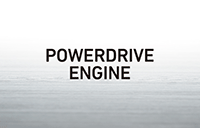 |
POWERDRIVE ENGINE
|
The PowerDrive Engine is the body unit that achieves high-efficiency, powerful retrieval force. This PowerDrive Engine consists of two key technologies: Oversized Power Digi Gear and Roller Power Oscillation.
Thanks to DAIWA's unique Monocoque body, it is possible to increase the diameter of the drive gear even further, while also refining the oscillating mechanism. This results in a retrieval that is distinctly lighter from the initial turn, yet powerful. |
|
|
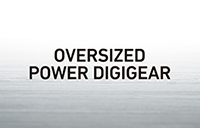 |
OVERSIZED POWER DIGIGEAR
|
| The highly durable G1 Duralumin MC Tough Digi Gear has been further increased in diameter by approximately 10% and thickness by about 6%, resulting in an exceptionally strong gear (based on our calculation method). Even during extended high-load fights, the gear minimizes flexing as much as possible, ensuring stable and consistent engagement. By significantly reducing power transmission loss, it guarantees smooth and light retrieval. |
|
|
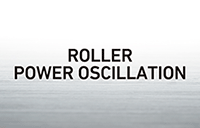 |
ROLLER POWER OSCILLATION
|
| During a prolonged fight with large fish, the friction resistance in the oscillating part of the retrieval leads to power transmission loss. To minimize this friction, the sliding part has been changed from the traditional pillar-style to a 2-ball bearing oscillating system. As a result, oscillation efficiency has improved by approximately 30%, providing smooth initial response under high load and ensuring light yet powerful retrieval. (Based on our comparative tests.) |
|
|
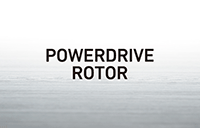 |
POWERDRIVE ROTOR
|
The PowerDrive Rotor in the front unit combines high rigidity and low inertia with a rational spherical shape. This rotor is constructed with two key technologies: Crank Power Bail and Tough Line Roller System.
The unique rotor shape, which seems to be carved from a sphere, maintains symmetry and high balance relative to the rotation axis, ensuring high rigidity against forces applied unexpectedly from the outside. Additionally, the bail and line roller mounted on this rotor have been revamped, allowing for accurate line feeding and smooth transition to the winding action. |
|
|
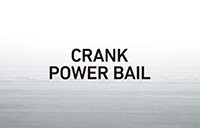 |
CRANK POWER BAIL
|
| In big game fishing, being able to quickly retrieve line in any situation is a critical task. By optimizing the crank shape with the ideal angle on the bail and reinforcing the spring mechanism, this system ensures that the tensioned line is reliably guided to the line roller, preventing accidental opening and closing. Additionally, the hollow pipe structure with a thick shaft ensures high rigidity. |
|
|
 |
TOUGH LINE ROLLER SYSTEM
|
To withstand repeated high loads, the roller shaft, designed with a larger support surface, has been integrated with the bail arm, eliminating the wobble that occurred at previous connection points and significantly improving durability. The newly designed PE-specific line roller reduces friction resistance with the line, enabling lighter retrieval. This new, tough mechanism greatly enhances rigidity, durability, and trouble-free performance.
Note: For the line roller, the 25 SALTIGA is equipped with a PE line-specific (non-Twist Buster) roller to reduce friction resistance. When using monofilament lines (such as nylon or fluorocarbon), line twisting may cause line troubles. It is recommended to replace the line roller with the Monofilament Line (Twist Buster) version, available separately, at SLP for repair. |
|
|
 |
DRD
|
The DRD (Drag Resistance Drag) is a completely new drag mechanism designed to withstand long, repeated runs of large fish and prevent wear and heat seizing in high drag settings. Instead of the traditional carbon washers used in drags, the DRD washer is equipped with eight metal rollers on a single metal plate. This design significantly reduces friction heat, minimizing drag force loss and achieving durability that is over five times greater than that of carbon washers (based on our comparative tests). Additionally, it contributes to smoother drag engagement.
Note: Standard on models 18000-25000. For models 8000-14000, the SLP WORKS SALTIGA spool is compatible with DRD14000. To fully maximize the performance of DRD, it is necessary to replace the drag knob with the SLP WORKS SALTIGA DRD Radiation Knob (sold separately). |
|
|
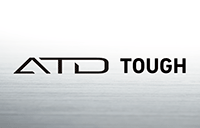 |
ATD TOUGH
|
| The ATD (Automatic Tournament Drag) Tough system smoothly adjusts to the fish's pull and continues to apply consistent drag force. In the ATD Tough, carbon washers are used to achieve high durability. The focus on smooth engagement and responsiveness allows anglers to concentrate on the fight without worrying about drag settings. |
|
|
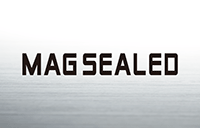 |
MAGSEALED
|
MAGSEALED is DAIWA's unique waterproof technology that creates a barrier of magnetic oil between the body and rotor, effectively sealing out seawater, dust, and other contaminants.
Note: MAGSEALED is incorporated in the pinion area, line roller area, and both ends of the drive gear. |
|
|
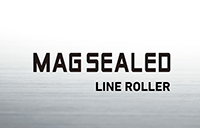 |
MAGSEALED LINE ROLLER
|
| The line roller is a component that directly receives water and sand carried by the line. By improving the waterproof performance of the line roller under these harsh conditions, it helps maintain initial performance such as rotation feel and sensitivity. Additionally, the reduction of salt and debris buildup significantly enhances rotation, which further improves the effect of reducing line twist. |
|
|
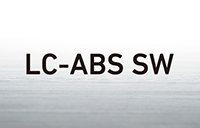 |
LC-ABS SW
|
| In contrast to the regular LC-ABS, which optimizes the spool ring shape for smooth line release, the LC-ABS SW features a two-stage taper shape on the upper side of the spool's line-winding section, directed towards the spool ring. This design reduces friction resistance between the line released from the deeper diameter and the spool, enhancing the casting feel and improving line release performance in the latter half of the cast. Particularly when using thicker lines, which cause more significant changes in spool diameter during casting, this results in an approximate 2% increase in casting distance. It supports anglersf desire to cast further. (Based on our comparative tests.) |
|
|
 |














